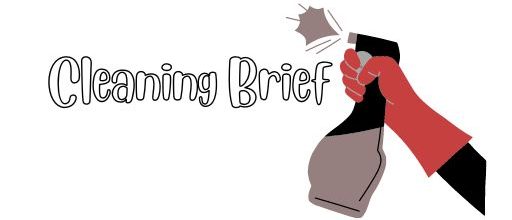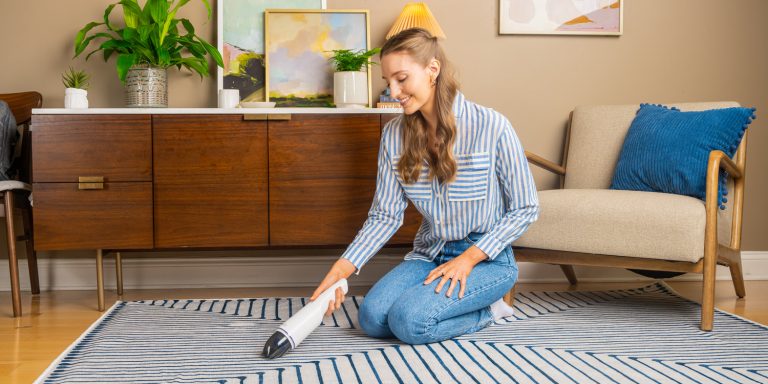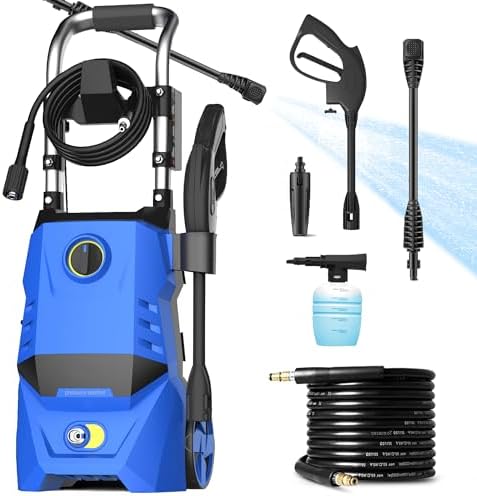How Long Does It Take to Clean Carpet? Discover the Quick and Efficient Method!
Carpet cleaning usually takes about 20 minutes per room, depending on the size and condition of the carpet. Proper cleaning techniques and equipment can help expedite the process and ensure thorough cleanliness, making your carpets look fresh and odor-free.
Regular maintenance and professional cleaning can prolong the life of your carpets, so it is recommended to schedule cleanings every 6-12 months. By investing in professional carpet cleaning services, you can eliminate allergens, stains, and odors, creating a healthier and more hygienic environment for your home or business.
Regular cleaning also helps maintain the appearance and color of your carpets, giving them a longer lifespan. Overall, a clean carpet not only improves the aesthetics of your space but also contributes to better indoor air quality and a healthier living environment for you and your family.
Factors Affecting Cleaning Time
The time taken to clean a carpet varies based on multiple factors, including the size and material of the carpet, the level of soiling, and the cleaning method used. Different carpets require different cleaning techniques, impacting the overall cleaning time.
Professional cleaning services can provide a quicker and more thorough cleaning, ensuring optimal results.
Carpet Size
One of the key factors influencing the time it takes to clean a carpet is its size. The larger the carpet, the more time consuming the cleaning process can be. When you have to cover a larger area, more time is needed to ensure every inch of the carpet is thoroughly cleaned. The size of the carpet dictates the time and effort required to move furniture around and treat different sections separately.
Carpet Material
The type of carpet material you have plays a significant role in determining the cleaning time. Different carpet materials require specific cleaning methods and products, which can affect the overall cleaning time. For instance, delicate or high-maintenance materials such as wool or silk often require more gentle and cautious cleaning processes, hence taking longer to clean. On the other hand, synthetic materials may be easier to clean and might require less time.
Level Of Soiling
The level of soiling heavily impacts the cleaning duration as well. Carpets that are heavily soiled or stained require more attention and time to remove the dirt and grime effectively. Stubborn stains and deeply embedded dirt might necessitate extensive pre-treatment and additional cleaning passes, resulting in an increase in the overall cleaning time. Regular maintenance and immediate spot cleaning can help prevent excessive soiling and reduce the cleaning time required.
Traditional Cleaning Methods
When it comes to cleaning carpets, traditional methods have long been the go-to choice for homeowners and cleaning professionals alike. These methods, such as steam cleaning and dry cleaning, offer effective solutions for removing dirt, stains, and allergens from carpets. Let’s take a closer look at each method and explore how long it typically takes to clean carpet using these traditional approaches.
Steam Cleaning
Steam cleaning, also known as hot water extraction, is a popular and efficient method for deep-cleaning carpets. This method uses hot water, usually mixed with a cleaning solution, to penetrate deep into the carpet fibers. The mixture is then extracted along with dirt and debris, leaving your carpets refreshed and revitalized.
When it comes to the time required for steam cleaning, it typically depends on various factors such as the size of the carpeted area and the extent of the cleaning required. However, as a general guideline, steam cleaning can take anywhere from 4 to 24 hours to complete.
Dry Cleaning
Dry cleaning is another commonly used method for carpet cleaning, especially when you want to minimize drying time. In this method, a specialized cleaning powder or foam is applied to the carpet and worked into the fibers using a brush or machine. The cleaning agent absorbs dirt and stains, which are then vacuumed away.
Compared to steam cleaning, the time required for dry cleaning carpets is relatively shorter. Typically, you can expect the process to take anywhere from 1 to 4 hours. Its shorter drying time makes dry cleaning a favorable option for those who need quick results or have carpets that cannot tolerate excessive moisture.
Ultimately, the time it takes to clean a carpet using traditional methods depends on various factors, including the size of the carpeted area, the level of dirt and stains, and the drying time. Therefore, it is advisable to consult with a professional carpet cleaner who can assess your specific needs and provide a more accurate time estimate.
Quick And Efficient Cleaning Method
When it comes to carpet cleaning, adopting a quick and efficient cleaning method is vital for achieving pristine results in a short amount of time. Proper cleaning methods not only ensure a thorough clean but also help in preserving the carpet’s quality and prolonging its lifespan.
Low-moisture Cleaning
Low-moisture cleaning is a fast and effective method that significantly reduces drying time. This process involves the use of specialized equipment that applies a minimal amount of moisture to the carpet, allowing for quick evaporation and preventing the risk of mold or mildew growth. With low-moisture cleaning, dirt and stains are lifted from the carpet fibers without saturating the entire carpet, making it an ideal choice for busy environments where minimal downtime is crucial.
Encapsulation Cleaning
Encapsulation cleaning is a revolutionary cleaning method that involves the use of polymers to encapsulate dirt and debris, forming crystals that can be easily vacuumed away. This process not only helps in efficiently removing soil and stains but also leaves behind a protective coating on the carpet fibers, making them more resistant to future soiling. Encapsulation cleaning is a rapid and eco-friendly option, as it requires minimal water usage and leaves behind no sticky residues.

Credit: www.amazon.com
Professional Vs. Diy Cleaning
When it comes to keeping your carpets clean and fresh, you have two options: professional cleaning or doing it yourself. Both methods have their pros and cons, and it’s important to understand which one is the best fit for you.
Benefits Of Professional Cleaning
- Expertise: Professional carpet cleaners have the knowledge and experience to handle different types of carpets and stains effectively.
- Efficiency: With their professional-grade equipment and cleaning solutions, experts can remove deep-seated dirt and grime that DIY methods often fail to eliminate.
- Time-Saving: Hiring professionals means you can sit back and relax while they handle the cleaning process from start to finish, saving you valuable time and energy.
- Improved Air Quality: Professional cleaning not only removes visible dirt but also eliminates allergens and bacteria, improving the air quality in your home.
- Long-Term Savings: While professional cleaning may seem more expensive initially, it can help extend the lifespan of your carpets, saving you money in the long run.
Diy Cleaning Tips
If you prefer the hands-on approach and want to tackle your carpet cleaning yourself, here are some helpful tips to ensure you get the best results:
- Vacuum Thoroughly: Start by vacuuming your carpets thoroughly to remove loose dirt and debris.
- Choose the Right Products: Research and select carpet cleaning products that are suitable for your carpet type and the specific stains you need to tackle.
- Pre-Treat Stains: Before proceeding with the overall cleaning, pre-treat stubborn stains with an appropriate stain remover and gently blot them.
- Follow Instructions: Read and follow the instructions on the cleaning products carefully to ensure you use the correct dilution ratios and application methods.
- Spot Test: Always perform a spot test on a small and inconspicuous area of your carpet to check for any adverse reactions or color fading.
- Use Proper Technique: When cleaning, use gentle circular motions and avoid aggressive scrubbing, as it can damage the carpet fibers.
- Allow for Drying Time: After cleaning, give your carpets ample time to dry completely before walking on them to prevent re-soiling and mold growth.
Now that you know the benefits of professional cleaning and have some useful tips for DIY cleaning, you can make an informed decision based on your preferences and needs.
Maintaining Clean Carpets
To keep your carpets looking fresh and vibrant for years to come, regular maintenance is key. By adopting a few simple cleaning practices, you can extend the life of your carpets and enhance the overall cleanliness of your home. In this section, we will explore two essential aspects of maintaining clean carpets: regular vacuuming and immediate stain treatment.
Regular Vacuuming
Regular vacuuming is the most effective way to prevent dirt, dust, and debris from settling deep into your carpet fibers. Not only does it improve the appearance of your carpets, but it also contributes to a healthier indoor environment for you and your family.
Aim to vacuum your carpets at least once a week, focusing on high-traffic areas and spots prone to spills or stains. Using a vacuum cleaner with strong suction power and a rotating brush is ideal. Be sure to tackle hard-to-reach corners and under furniture where dust tends to accumulate.
When vacuuming, take your time and move the vacuum cleaner in slow, overlapping strokes to ensure thorough cleaning. Additionally, consider investing in a vacuum cleaner with a HEPA (High-Efficiency Particulate Air) filter, as it can effectively trap and remove allergens, improving the air quality of your home in the process.
Immediate Stain Treatment
Accidents happen, and when spills or stains occur on your carpets, it is crucial to address them promptly. Immediate stain treatment can prevent permanent discoloration and ensure the longevity of your carpets. Follow these steps to effectively tackle stains:
- Blot the affected area gently with a clean cloth or paper towel to absorb as much of the spill as possible.
- Avoid rubbing or scrubbing the stain, as this can further embed it into the carpet fibers.
- Apply a small amount of a suitable carpet cleaning solution to the stain, following the manufacturer’s instructions.
- Gently blot the stain again, working from the outer edges toward the center, until the stain is no longer visible.
- Rinse the area with clean water and blot once more to remove any remaining cleaning solution.
- Allow the carpet to air dry completely before walking on it.
It’s worth noting that different types of stains may require specific treatments, so it’s advisable to consult a professional or refer to carpet manufacturer guidelines for stubborn or unusual stains.
:max_bytes(150000):strip_icc()/rsp-detail-tineco-pure-one-s11-tango-smart-stick-handheld-vacuum-at-tineco-hwortock-0015-1-6e3c8edc53004676870127b708100d5a.jpeg)
Credit: www.realsimple.com

Credit: www.architecturaldigest.com
Frequently Asked Questions On How Long Does It Take To Clean Carpet
How Long Does It Generally Take To Clean Carpet?
The time it takes to clean a carpet depends on factors such as the size of the carpet, the level of dirtiness, and the cleaning method used. On average, it can take anywhere from 20 minutes to 2 hours to clean a carpet.
What Are The Factors That Affect Carpet Cleaning Time?
Several factors can affect the time it takes to clean a carpet. These include the size of the carpet, the level of dirtiness, the type of stains, the cleaning method used, and the equipment and tools utilized.
Can I Clean My Carpet Myself In A Reasonable Time?
Yes, you can clean your carpet yourself in a reasonable time. With the right cleaning products, equipment, and techniques, you can effectively clean your carpet within a few hours. However, for more thorough and deep cleaning, it is recommended to hire professional carpet cleaners.
Conclusion
To sum up, the time it takes to clean a carpet varies depending on factors like size, material, and method used. Regular maintenance can prevent deep set stains and prolong the lifespan of your carpet. Hiring professional cleaners can provide a deep, thorough clean efficiently.
Remember, a clean carpet creates a fresh, healthy living environment.





